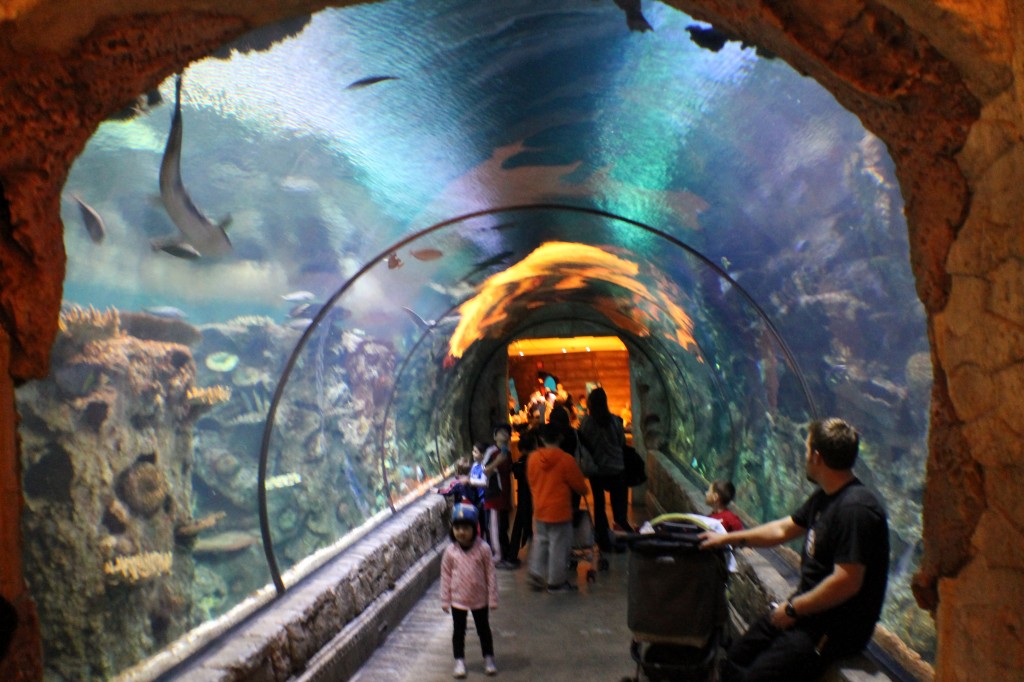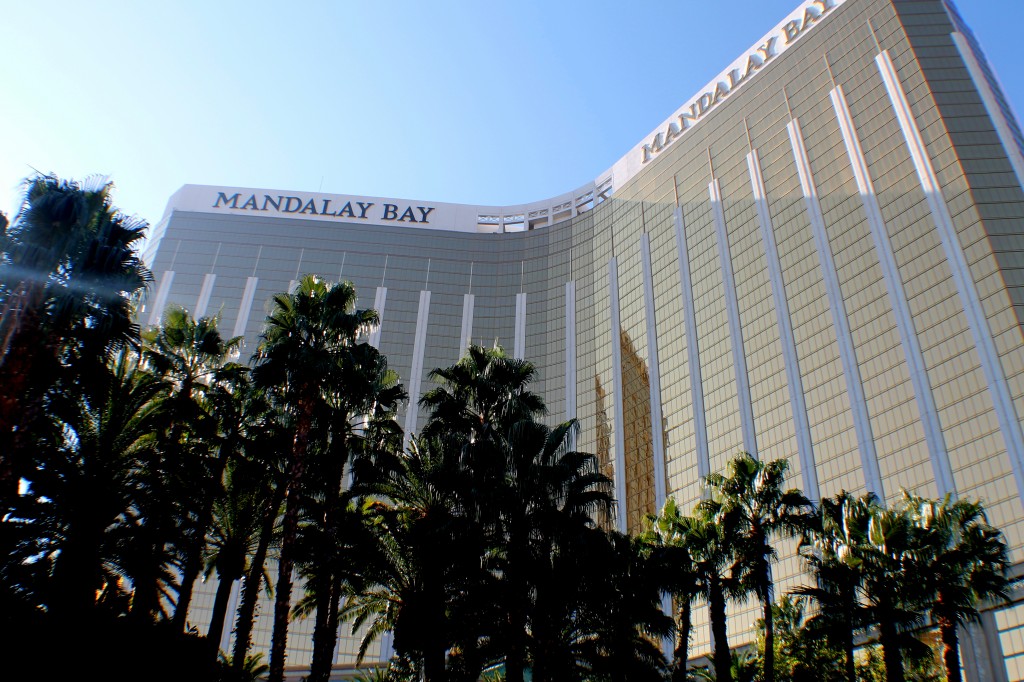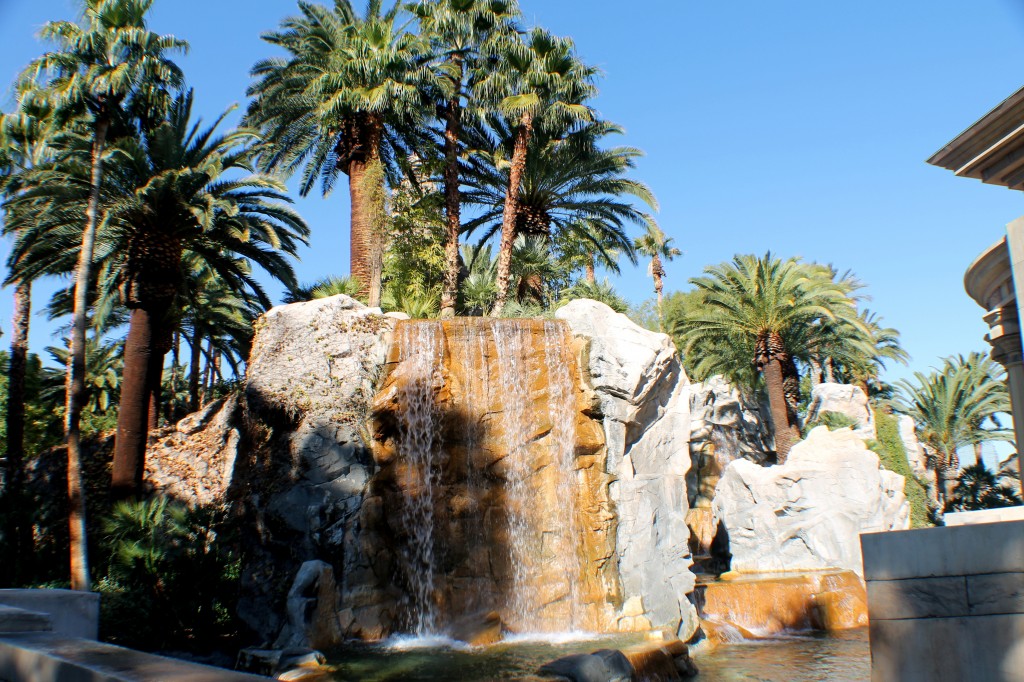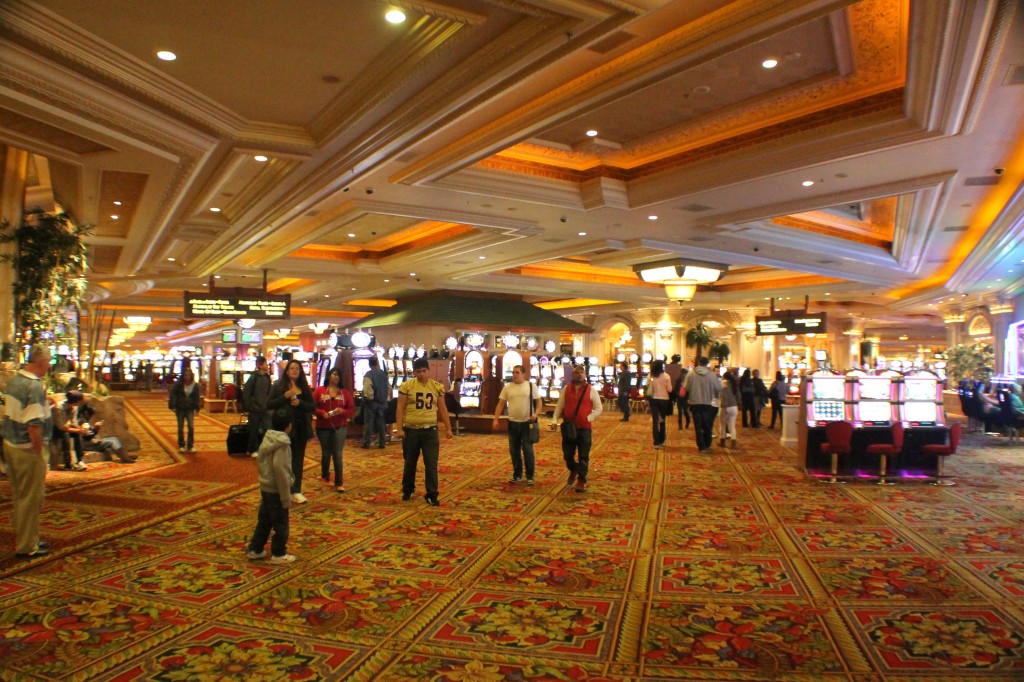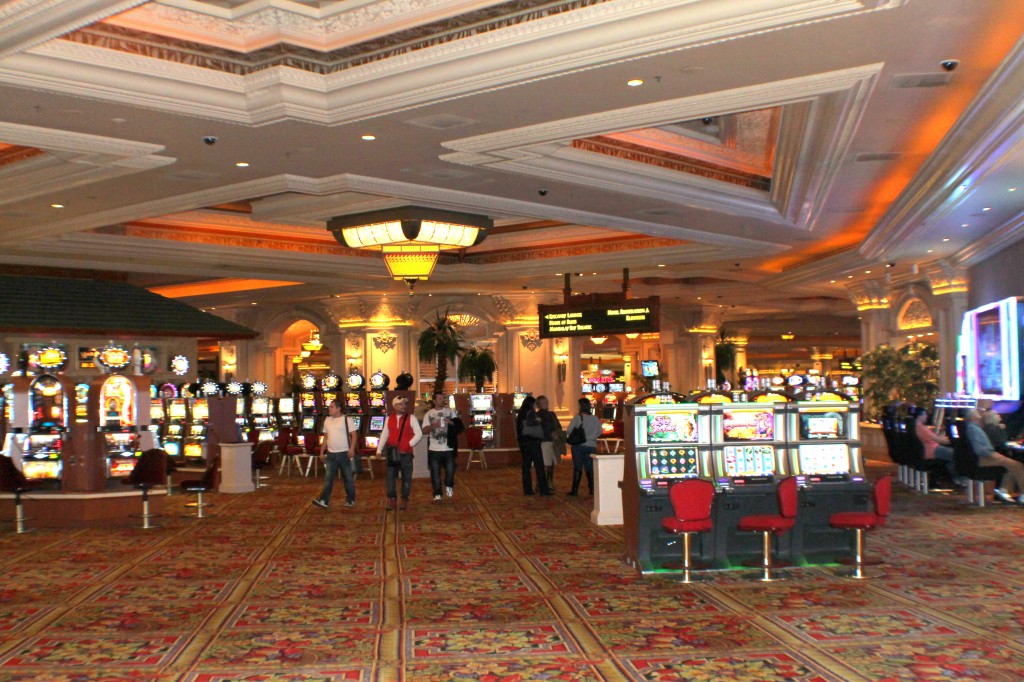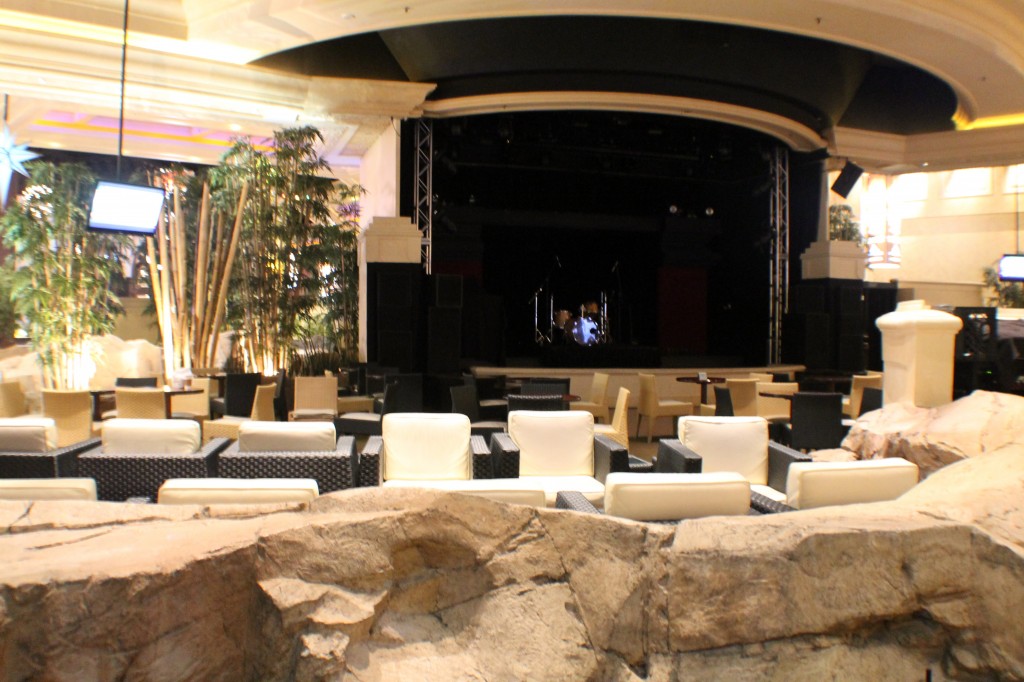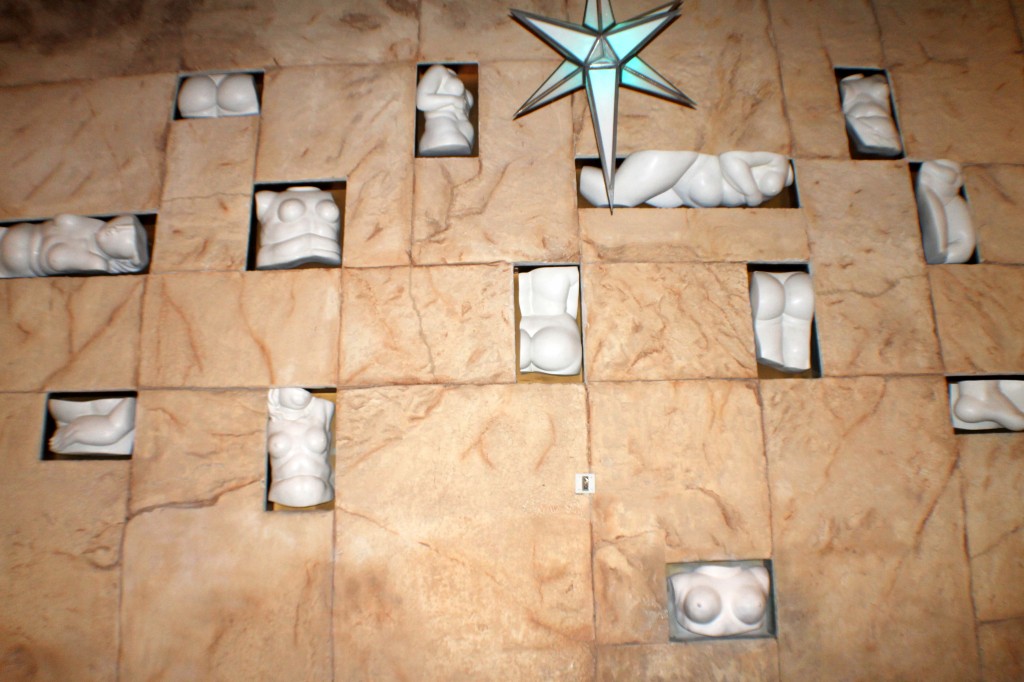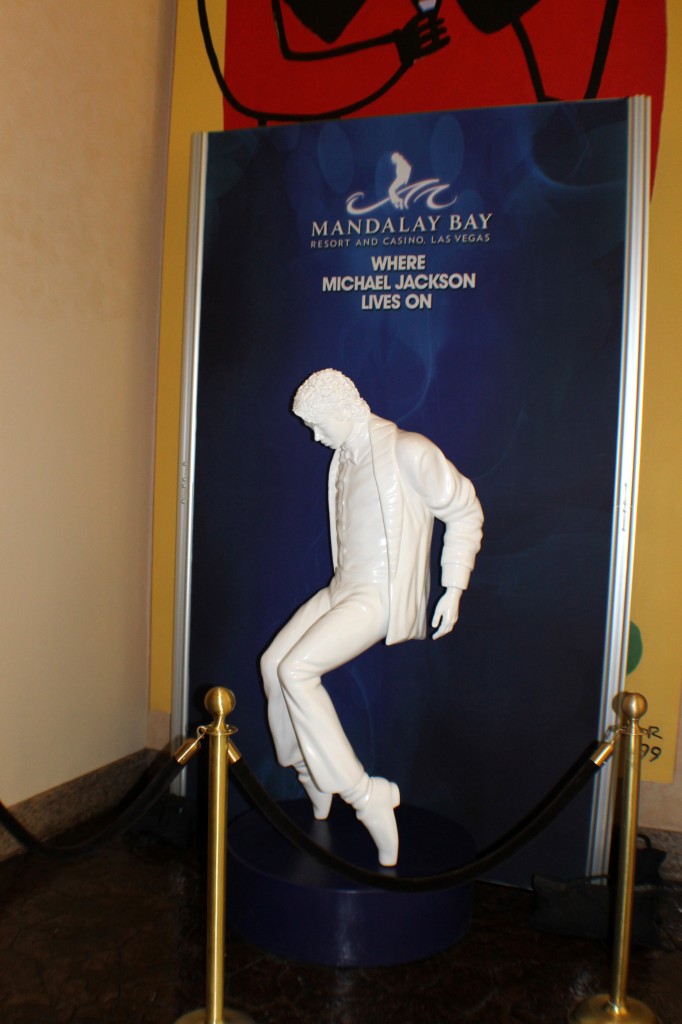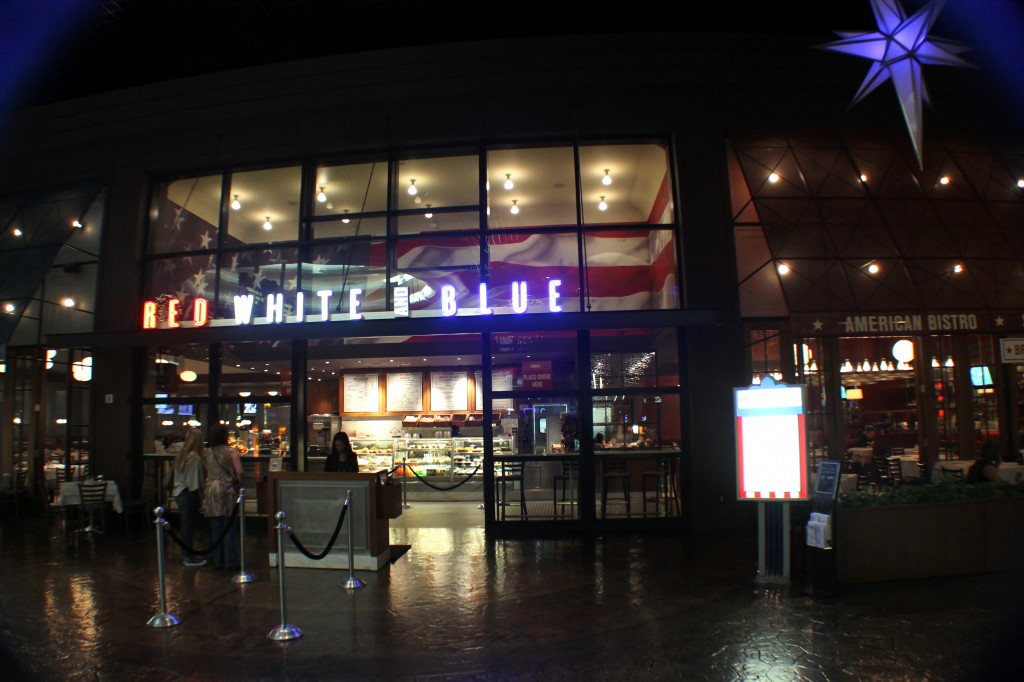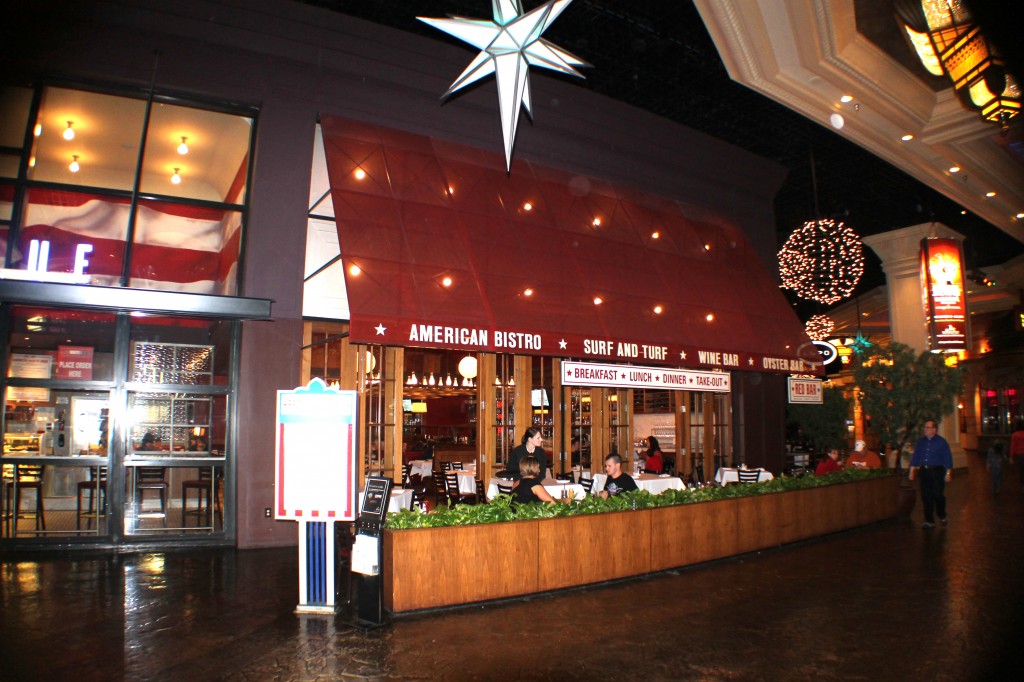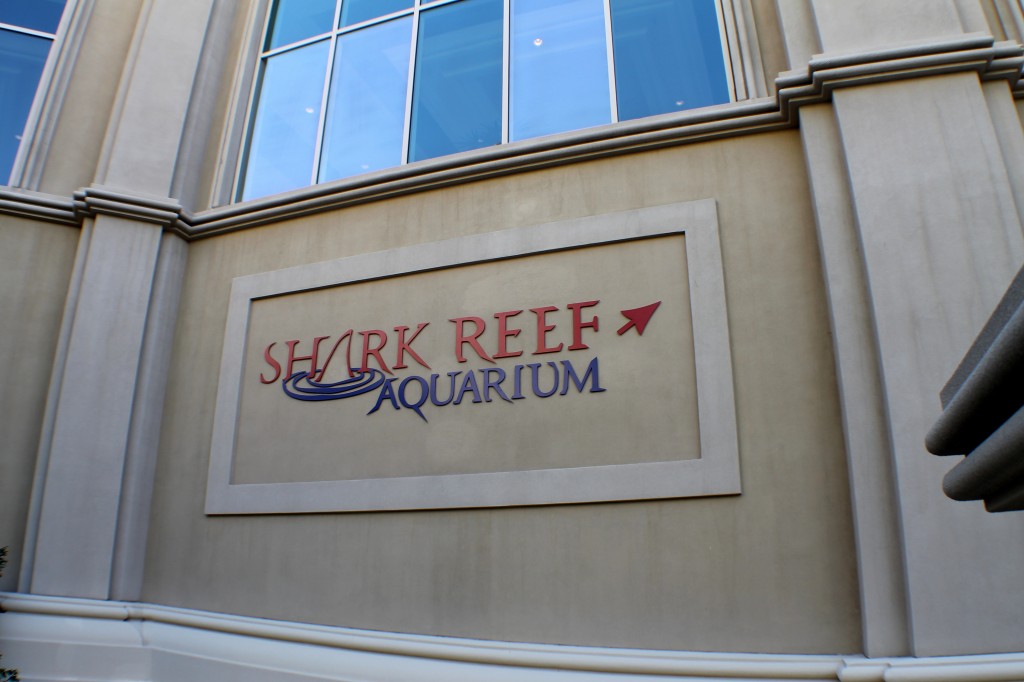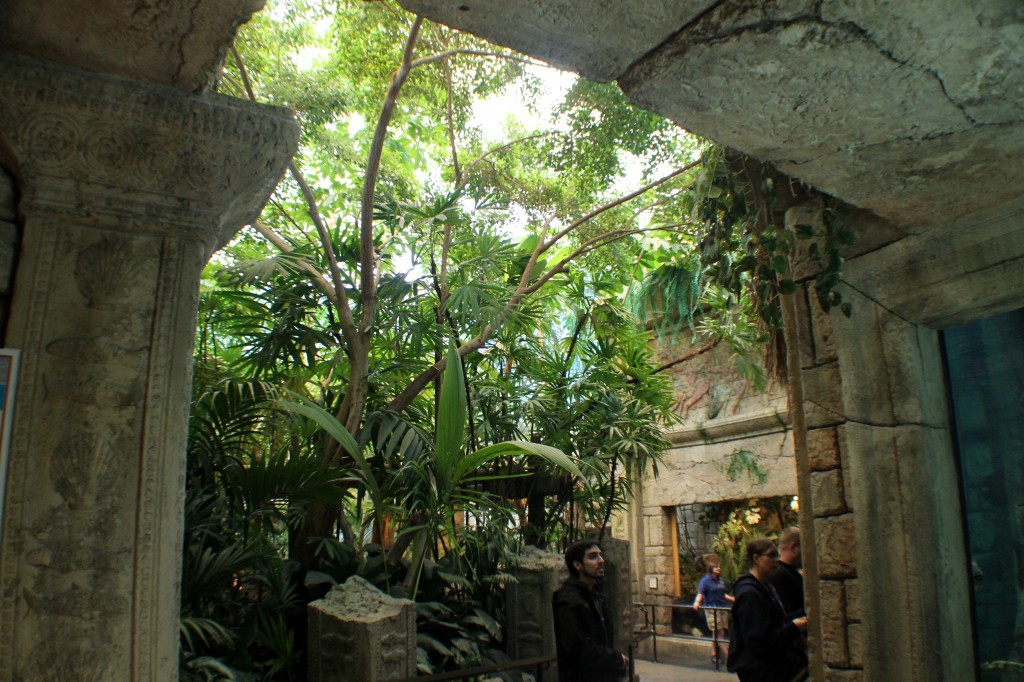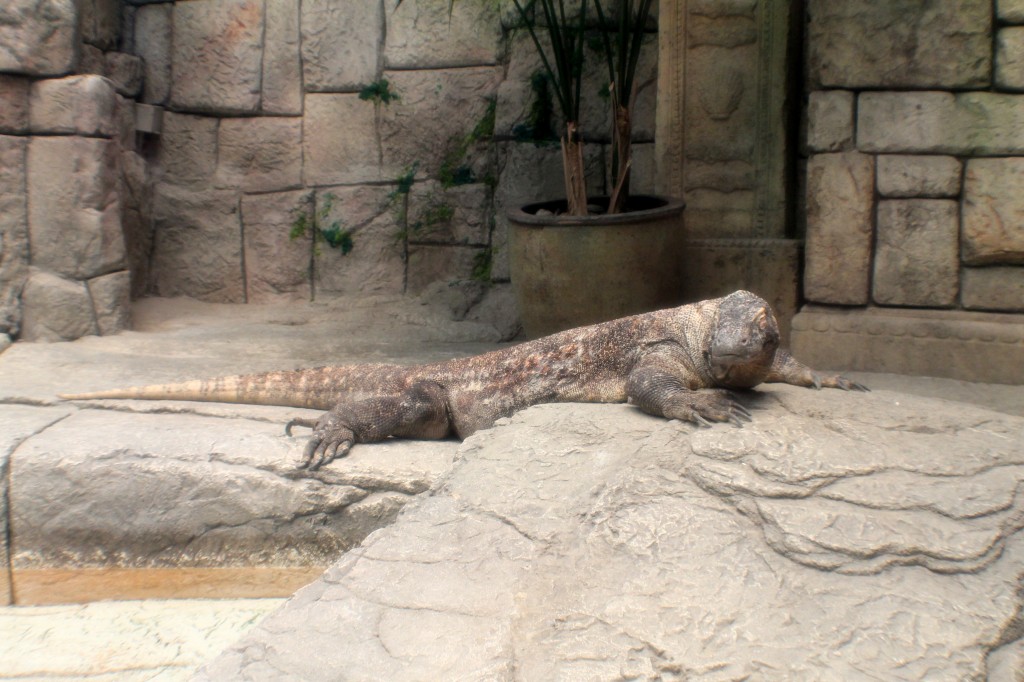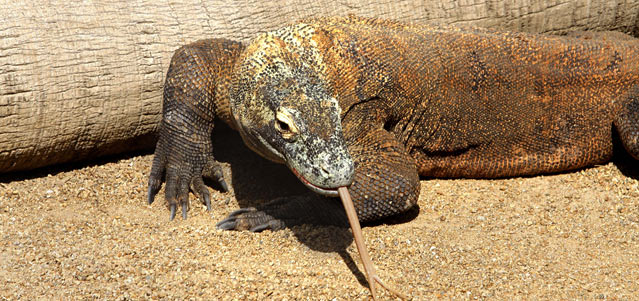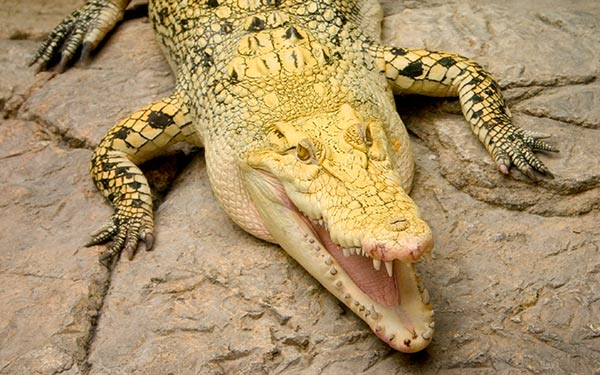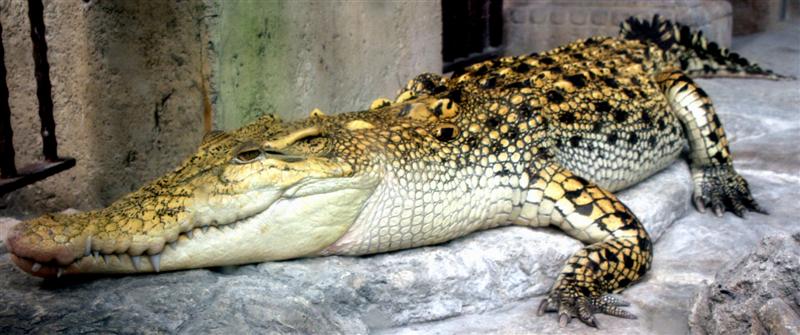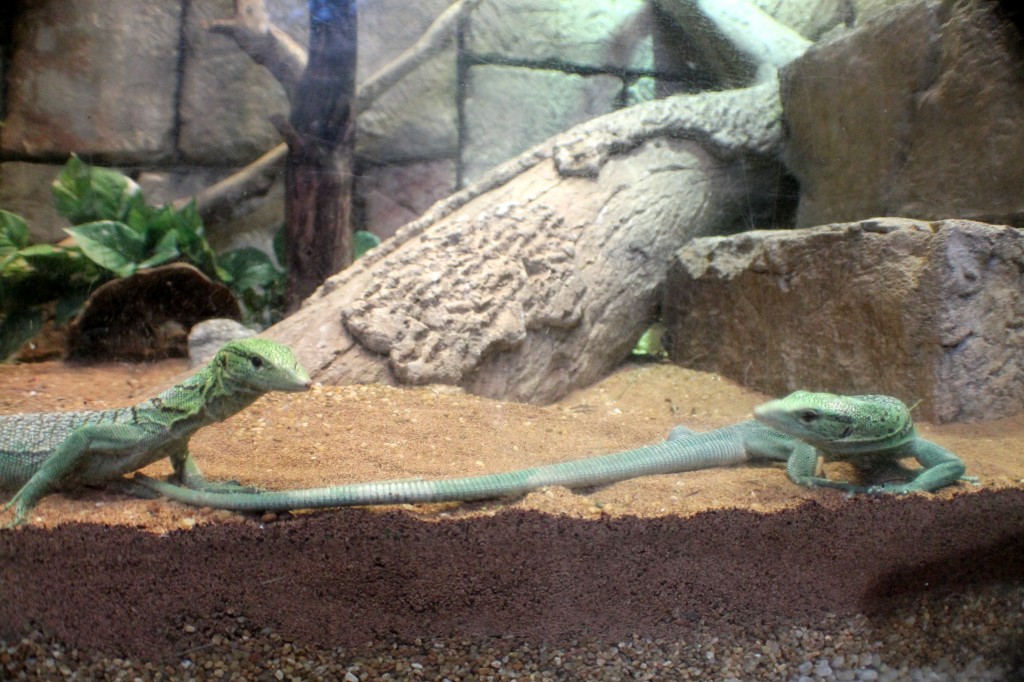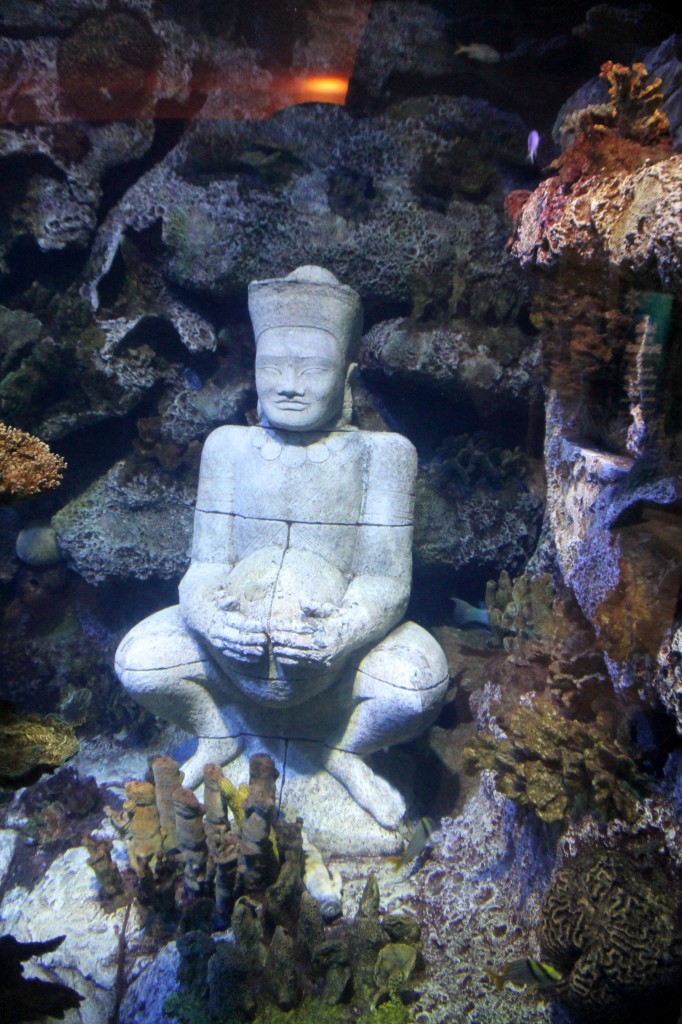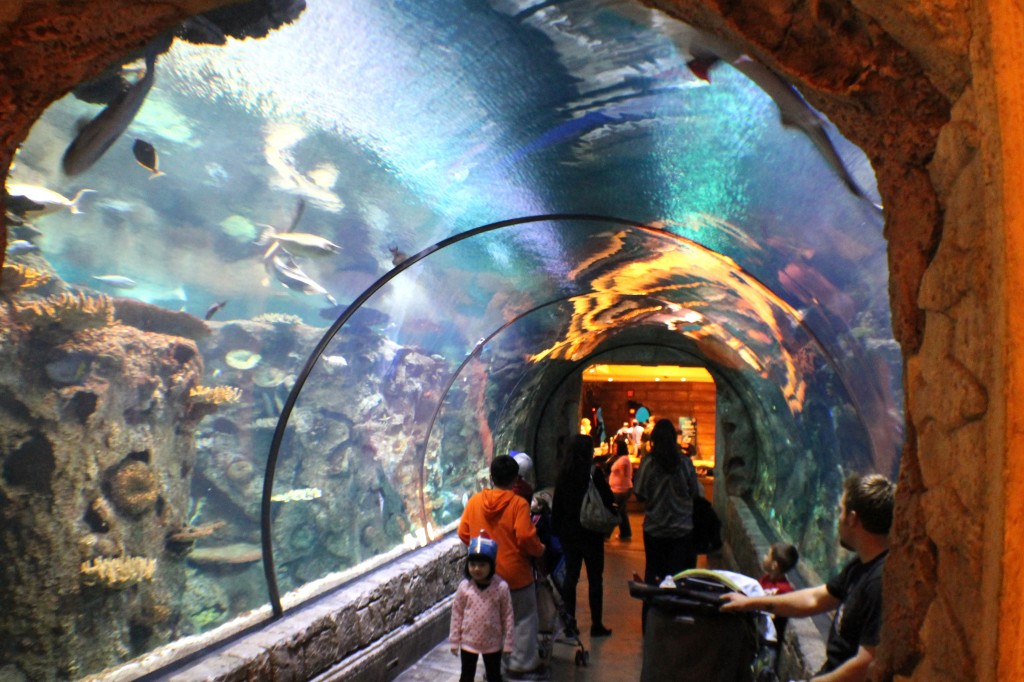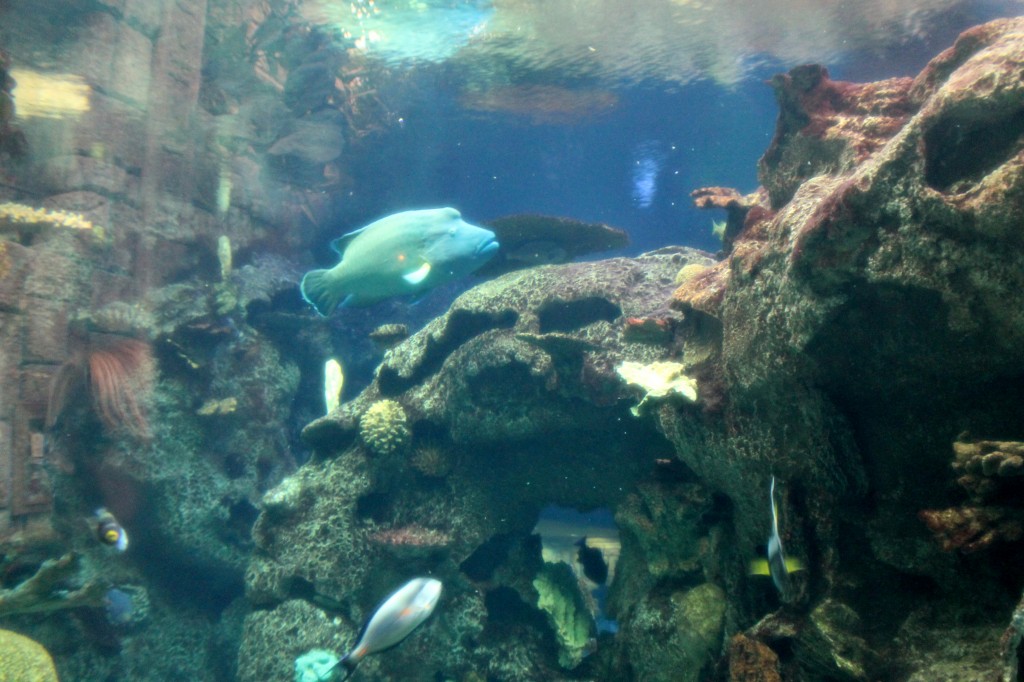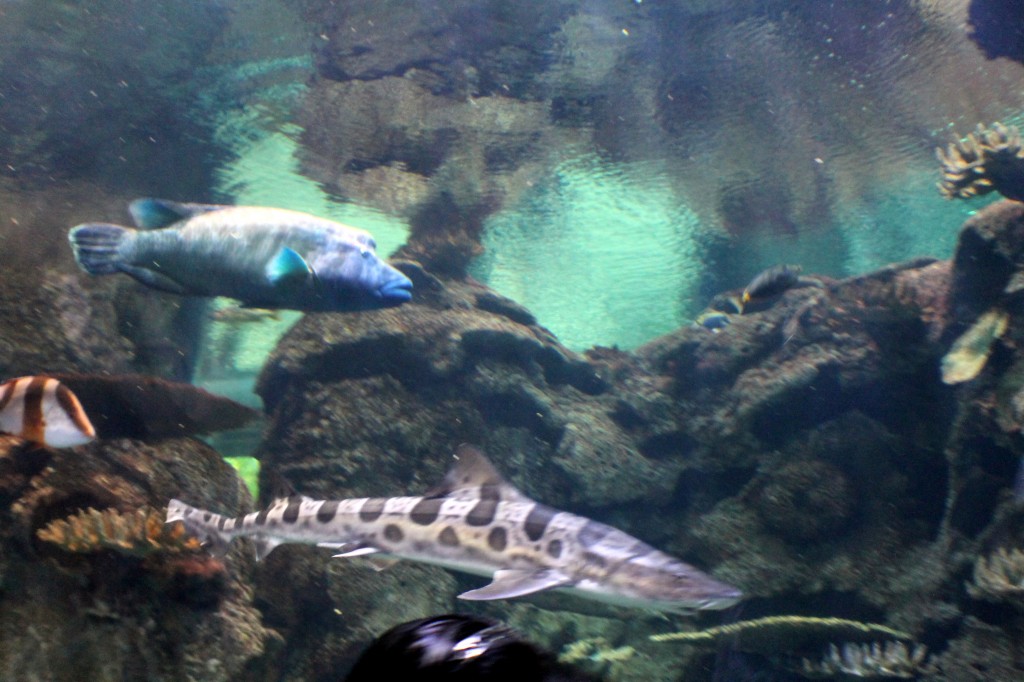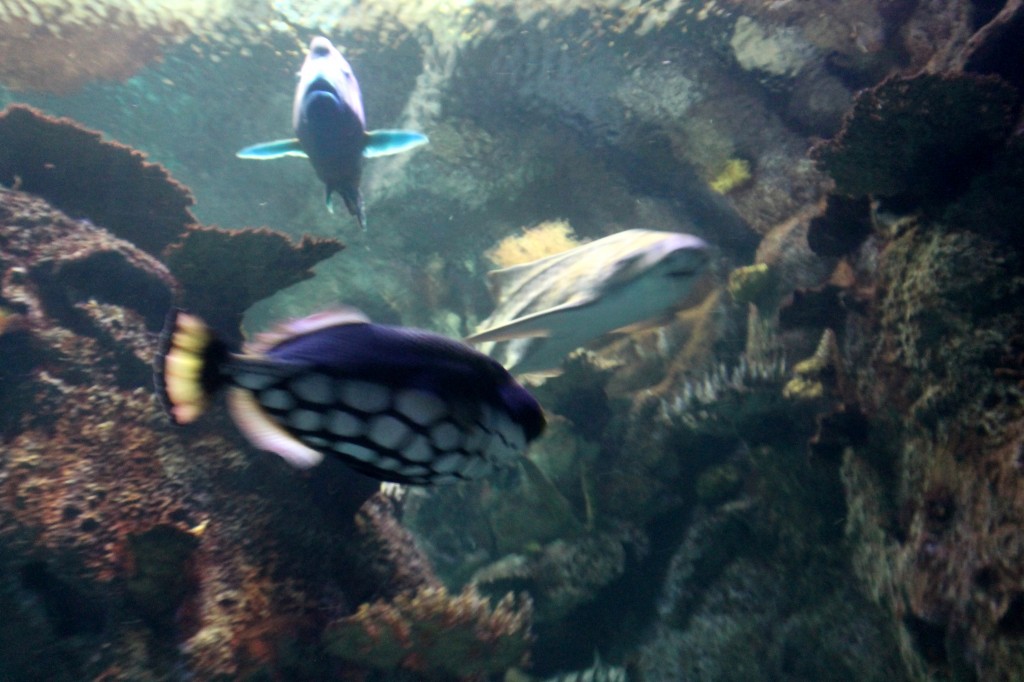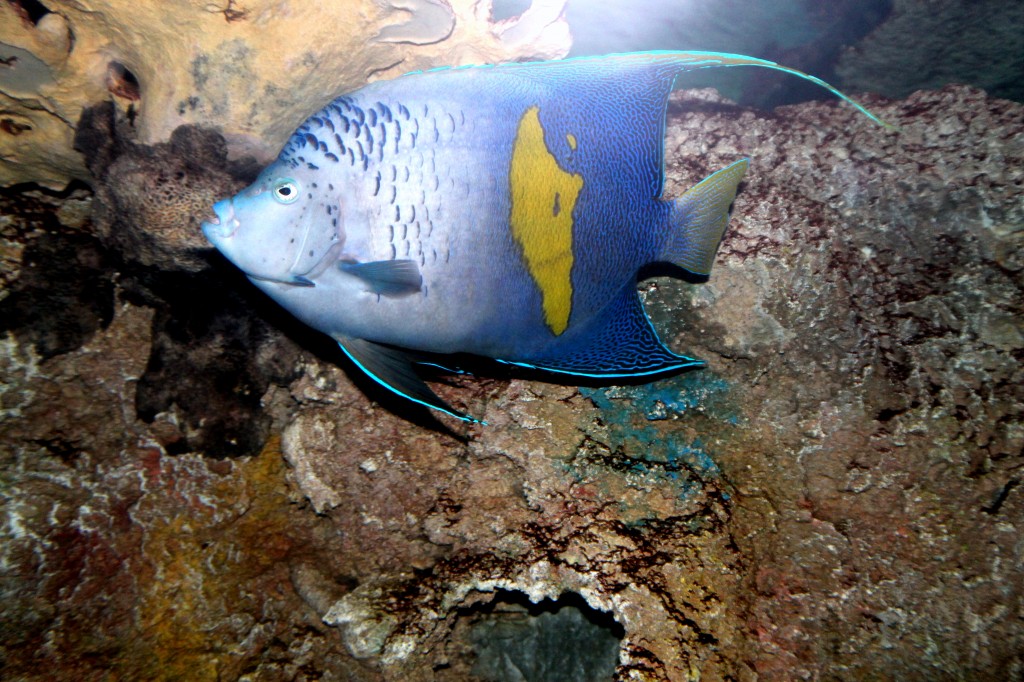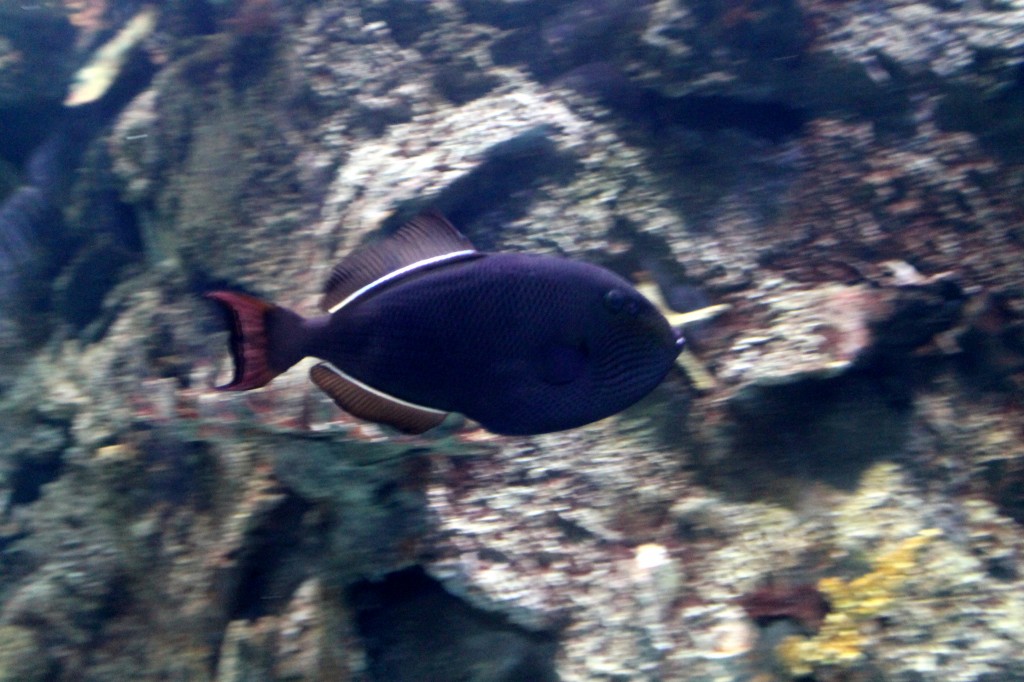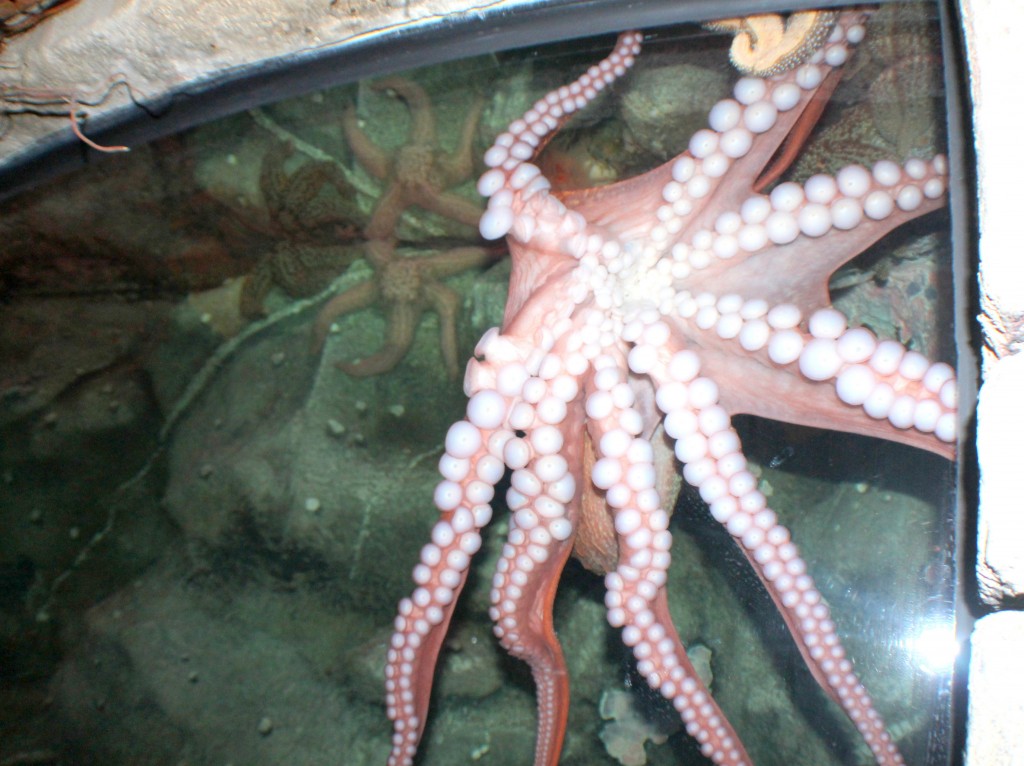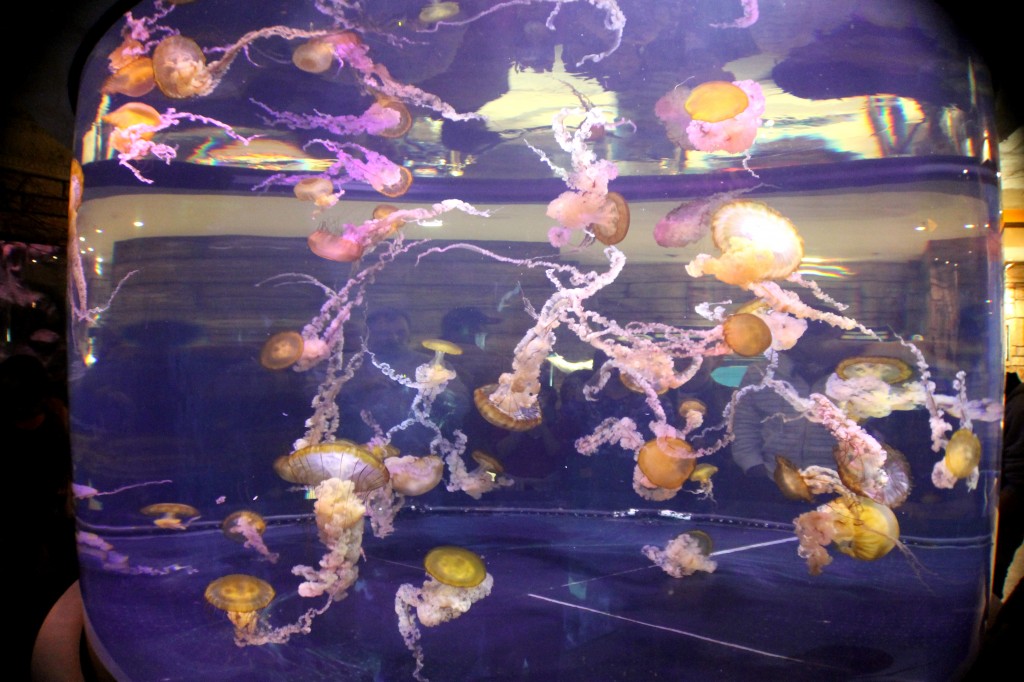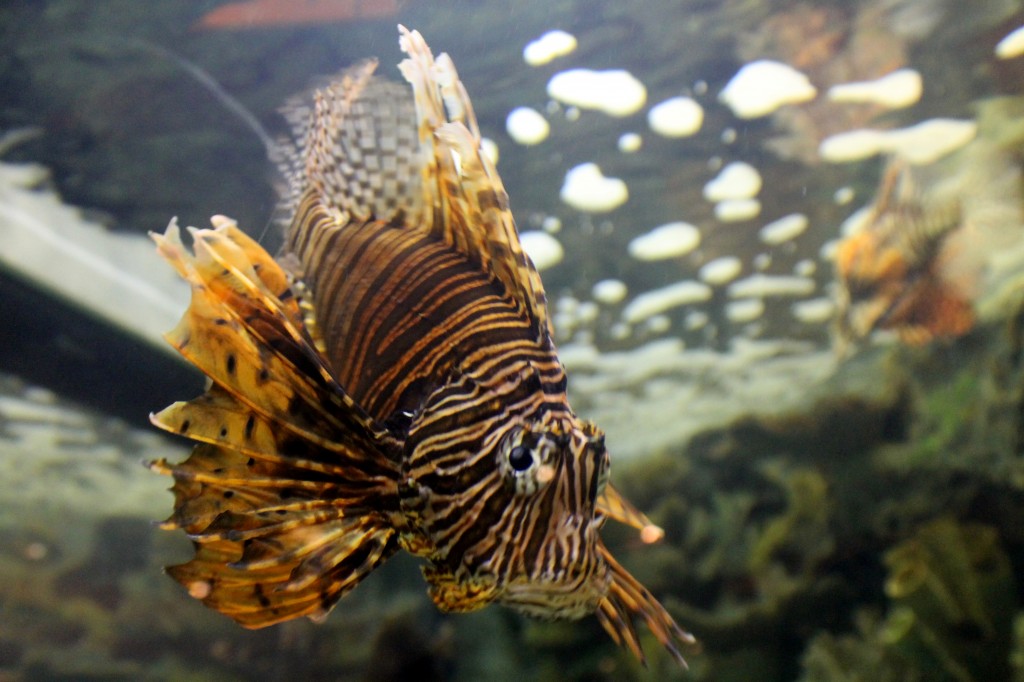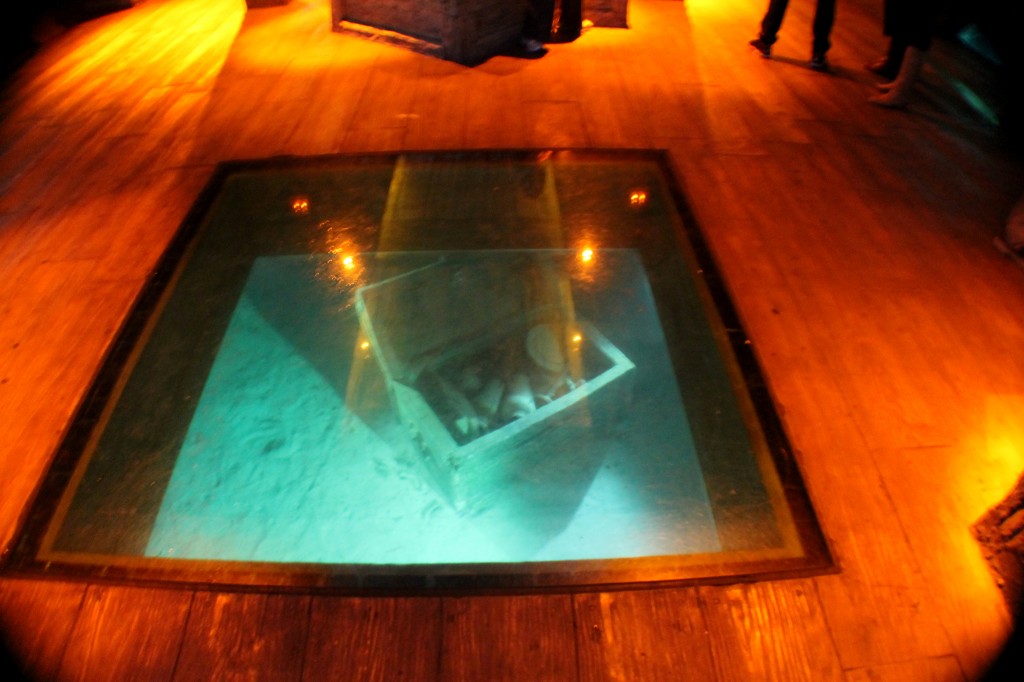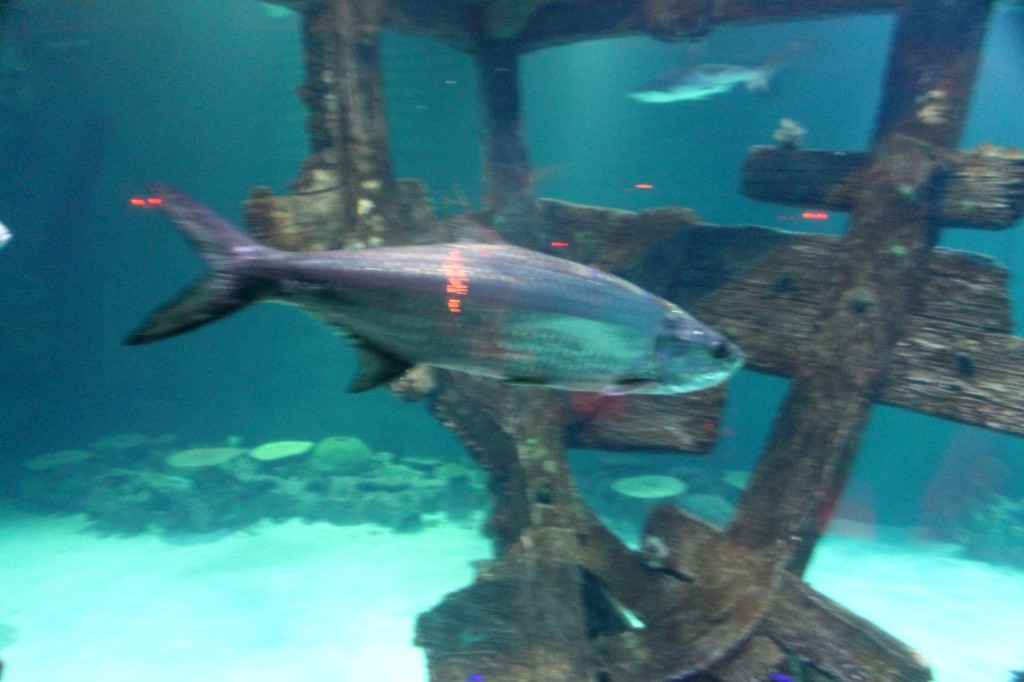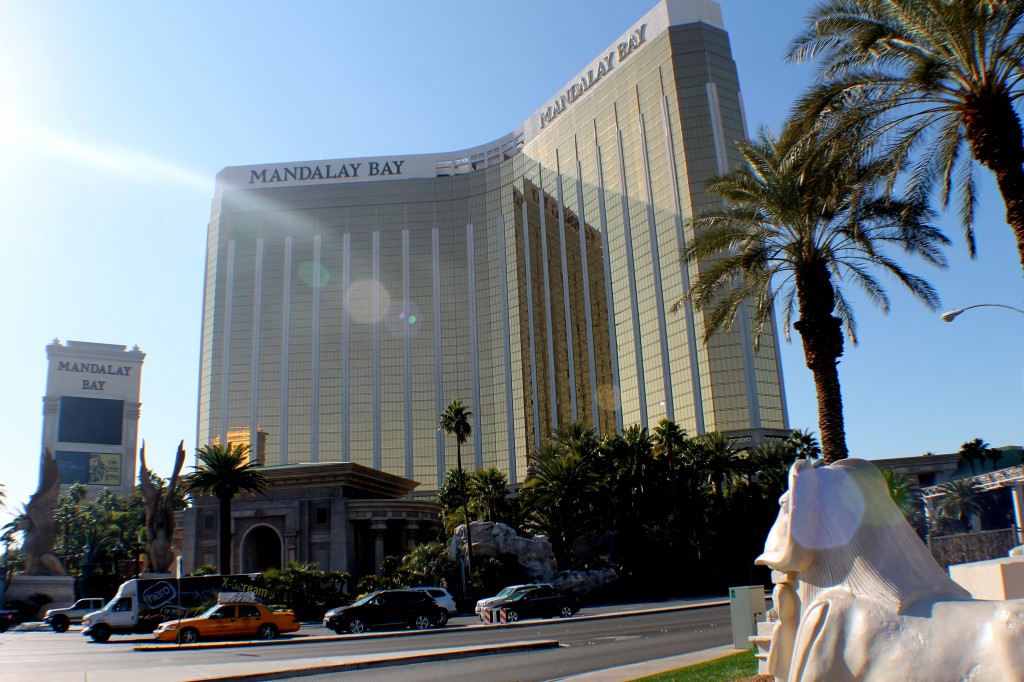The Las Vegas Strip is where every visitor to Las Vegas wants to go. The strip is the nickname for the street named Las Vegas Boulevard. It is four and half miles long, and runs from Mandalay Bay and the posh Four Seasons on the south end to the towering Stratosphere at the north end. Dave and I already visited the Stratosphere tower here. Our next visit is the Shark Reef Aquarium at the Mandalay Bay resort.
Mandalay Bay brings a touch of the tropics to the Nevada desert. With palm trees, tumbling waterfalls, and fire pots greeting it’s guests, it feels like you’ve found paradise. Mandalay Bay Hotel and Casino is known for its sprawling (11 acres) pool complex with plenty of room for the lazy river, wave pool, and four swimming pools. Private cabanas and lounge chairs provide places to relax. Located up and above the pool with a view of the wave pool below is Moorea Ultra Beach Lounge-one of the premier adults only European-style pools in Vegas.
Of course, there is a huge casino in the Mandalay Bay. There are more than 2,000 video poker and slot machines on the floor, just steps away from table games and the high-limit lounge. There’s also a casino at the Mandalay Bay Beach, where you can play in your bare feet and swimwear if you’d like.

There are numerous lounges to relax inside the resort.
There is some interesting wall art in the hotel.
This resort is humongous with the impressive beach/pool area. Although the wave pool was closed due to the weather, it was still December. 

We finally found the Shark Reef aquarium with great difficulties. Not really, it was just a lot of walking.
The Shark Reef is North America’s only predator-based aquarium and exhibit. This aquarium features such fascinating creatures as sharks, sawfish, and giant rays. There are more than 2,000 animals in all, and they have the freedom to glide around in more than one million gallons of water. There are opportunities to scuba dive in the Shark Reef Aquarium if you are dive certified.
This aquarium consist of 3 major areas: Jungle, Temple and Shipwreck. The Jungle section is home to aquatic reptiles and freshwater fish. It is an enclosed sunlit atrium. Featuring a rare lizard exhibit Komodo Dragon: this endangered species is the largest species of lizard and only 3,000 to 5,000 remain.
The Golden Crocodiles at Shark Reef Aquarium are a hybrid of Saltwater and Siamese Crocodiles. These animals have less pigment than other crocodiles, giving them their unique golden color. They are typically found in swamps, lakes, rivers, streams, and brackish water, although they have been known to travel long distances by sea.
Here are Emerald tree monitor lizards, which thrive in lowland environments, including tropical evergreen forests, palm swamps and cocoa plantations. They can be found in New Guinea, as well as several adjacent islands.
I don’t know what kind of message this statue is supposed to be sending.
The Temple section of the aquarium is filled with saltwater fish, sharks, rays, and jellyfish from around the world’s oceans. This section features a walk through Reef tunnel where visitors receive a diver’s view of the beautiful tropical fish and reef sharks. There are 2 tunnels in the aquarium: Reef tunnel below and Shark Exhibit tunnel in the first picture.
Blue Moon Angelfish. Many angelfish undergo a dramatic color change from the juvenile to the adult stage of their life. Despite their beauty, angelfish can be aggressive and territorial.
One of the popular features of the Shark Reef Aquarium is the Touch Pool, where visitors can interact with stingrays, horseshoe crabs and small sharks. The gallery is also home to smaller exhibits including venomous Lionfish, graceful Moon Jellies and a master of disguise – the Giant Pacific Octopus.
This octopus is the largest species of octopus in the world, with a weight up to 100 pounds and tentacles reaching up to 16 feet long. The suckers on an octopus’ tentacles give it incredible strength, and it will take 40 pounds of pull to release the grip of a three-pound octopus.
Jellyfish are not actually fish, but rather invertebrates (an animal without a backbone). They’re made up of 96% water and do not have eyes, ears, or a brain. The tentacles of the jellies contain stinging cells called cnidocytes. Depending on the species of jelly, the sting’s effect can range from a mild tingling feeling (a Moon Jelly sting) to paralysis, heart attack, and even death (a Box Jelly sting). Dead jellies can still sting as long as the tentacles are wet.
Lionfish are brightly colored fish that inhabit lagoons and reefs of the Indo-Pacific. The spines are equipped with potent venom that can deliver a painful sting. Lionfish use the sting for defense, and actually are peaceful towards other fish (as long as they don’t fit into their mouth). The stripes of a lionfish are as unique as human fingerprints, with no two fish having identical stripes.
The Shipwreck section is introduced by a sunken pirate ship surrounded by 1.3 million gallons of saltwater on all sides. This exhibit features 30 sharks up to nine feet in length, including Sandtiger, Sandbar, Nurse and White Tip Reef Sharks. The bow of the ship extends into waters teaming with chooling fish and other rare residents such as Green Sawfish and Green Sea turtles. Here is the link to see the shipwreck virtually.
Green Sawfish. Sawfish are actually a large species of ray with a shark-like body and an elongated, tooth-studded snout. The snout also has electroreceptors to detect the heartbeats of prey buried underneath the sand.
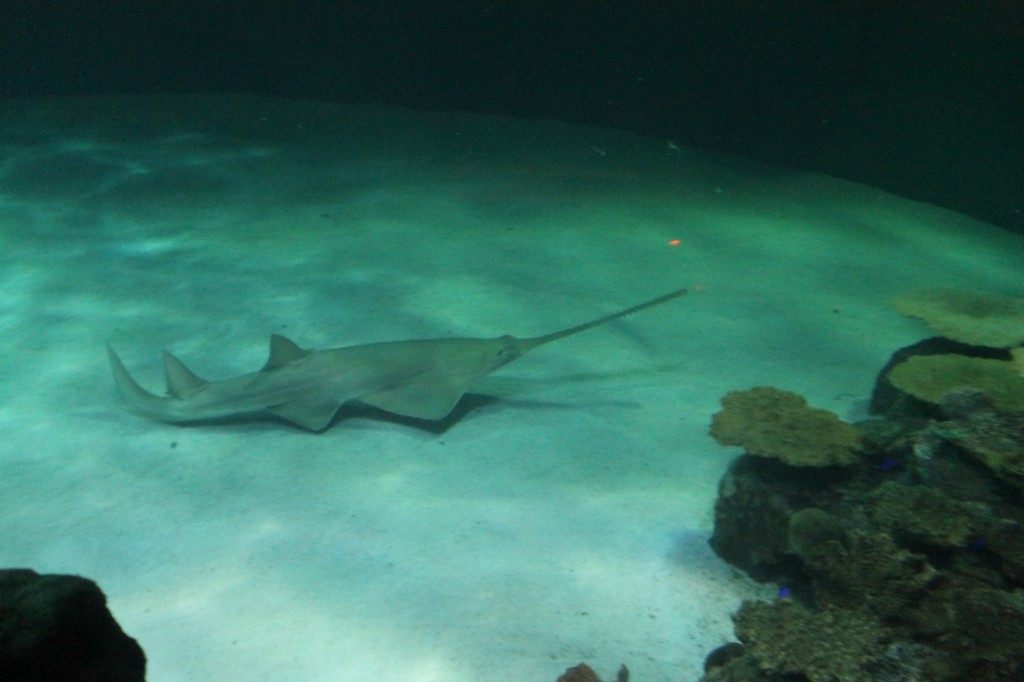
As usual, an exit goes through the Shark Reef Gift Shop. That’s all we explored in the Mandalay Bay. I am sure, there is much more to do in this mega hotel & casino.
